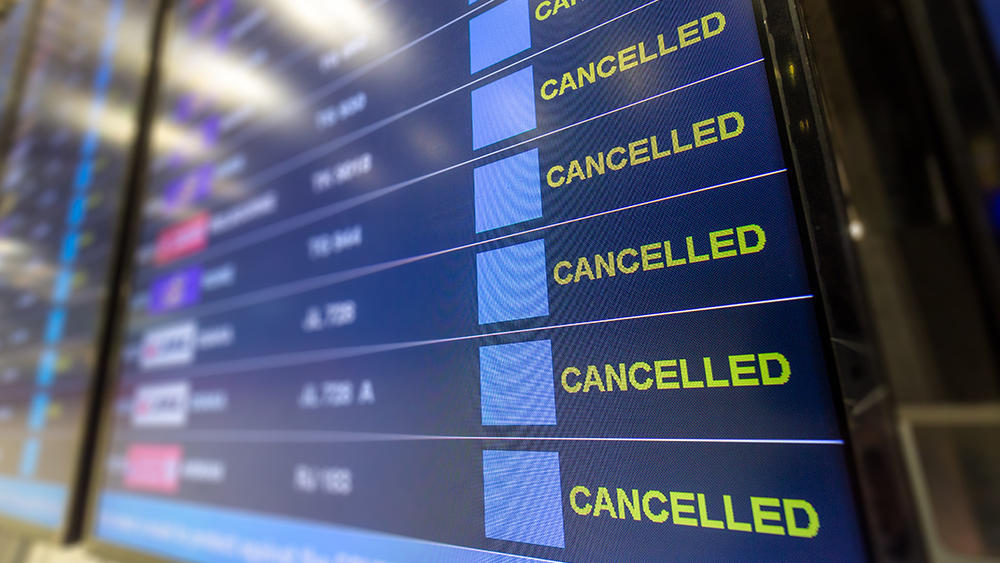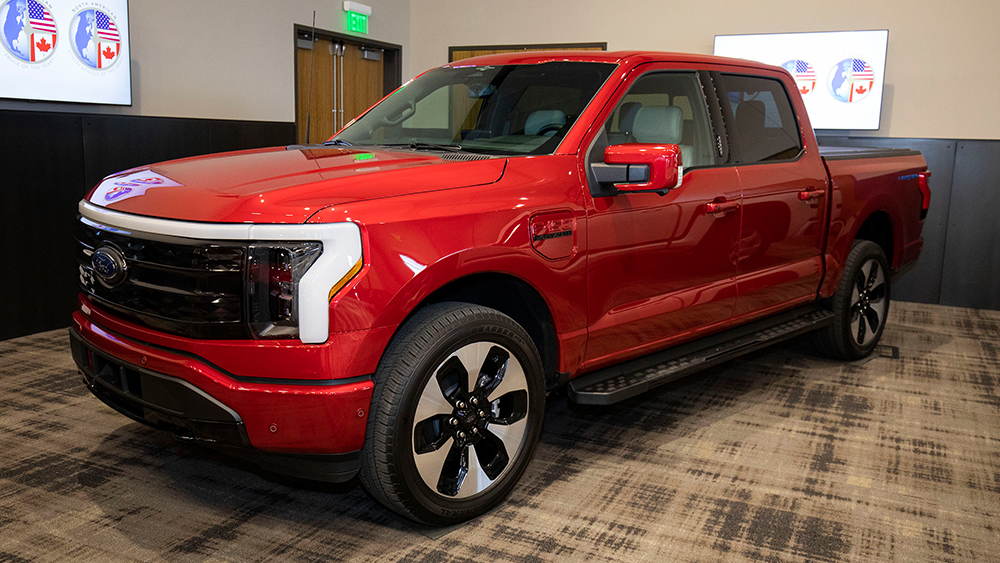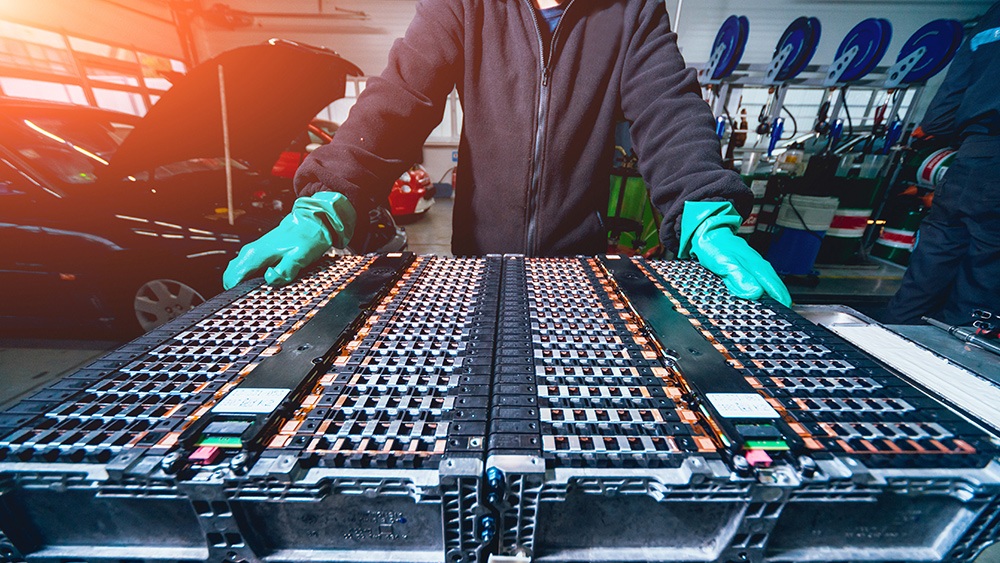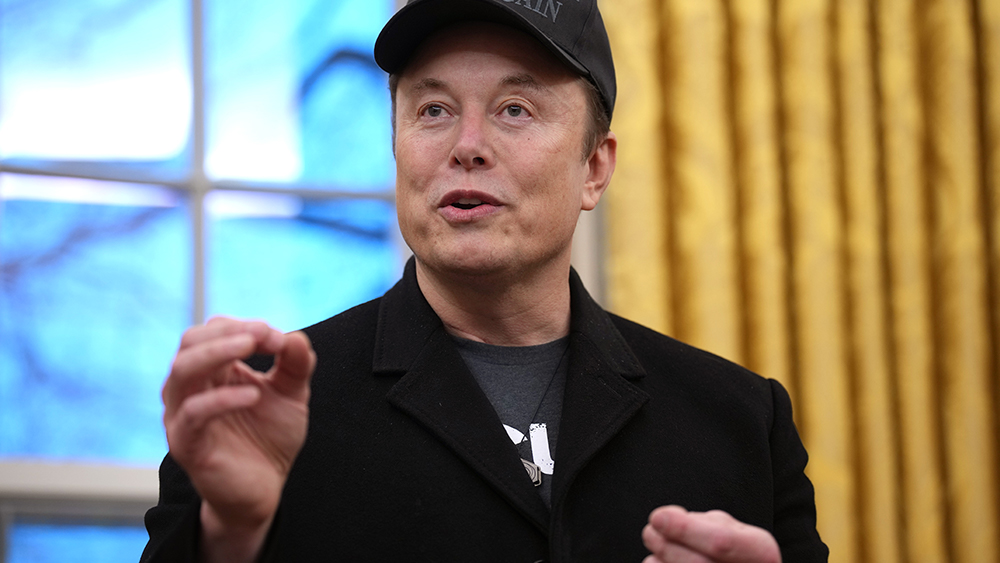NVIDIA and Uber forge historic partnership to deploy 100,000 AI-powered robotaxis by 2027
11/02/2025 / By Kevin Hughes
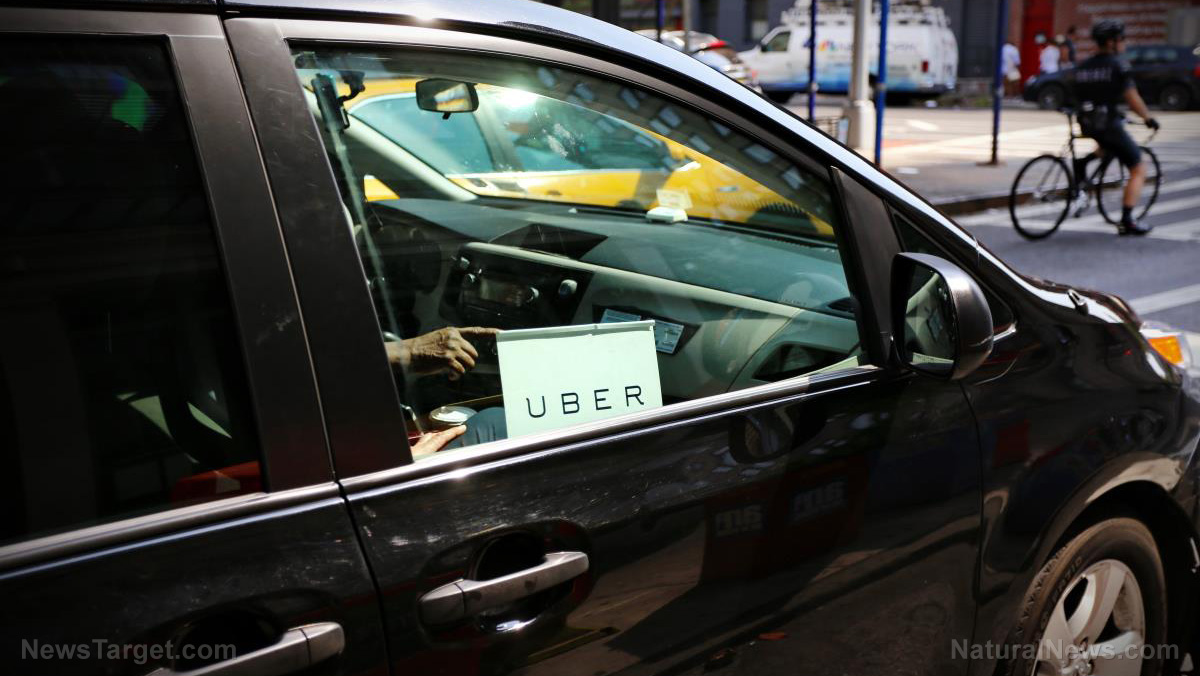
- NVIDIA and Uber announced a global alliance to deploy 100,000 Level 4 autonomous vehicles (AVs) by 2027, integrating NVIDIA’s AI infrastructure with Uber’s ride-hailing network.
- The vehicles will use NVIDIA DRIVE AGX Hyperion 10, processing real-time data from 14 cameras, nine radars, one lidar and 12 ultrasonic sensors, enabling predictive responses to weather, pedestrians and dynamic urban scenarios.
- Major automakers (Stellantis, Lucid, Mercedes-Benz) and trucking firms (Aurora, Volvo, Waabi) are joining NVIDIA’s ecosystem to develop AV-ready platforms, enhancing autonomy in passenger and freight transport.
- NVIDIA and Uber are building an AI data factory (NVIDIA Cosmos) to train models on 1,700 hours of global driving data, while the Halos Certified Program (ANSI-accredited) ensures AI safety for large-scale deployment.
- Uber is already testing Waymo robotaxis in U.S. cities, with plans for European expansion (Baidu/Lyft in Germany/UK by 2026), signaling a shift toward AI-dominated urban mobility.
In a landmark announcement at GTC Washington, D.C., NVIDIA and Uber revealed a strategic alliance to deploy 100,000 Level 4 autonomous vehicles (AVs) globally, with rollout beginning in 2027.
The partnership aims to revolutionize urban mobility by integrating NVIDIA’s cutting-edge AI infrastructure with Uber’s vast ride-hailing network, bridging human-driven and autonomous transportation.
The collaboration leverages NVIDIA DRIVE AGX Hyperion 10, a next-generation autonomous vehicle platform equipped with AI-powered supercomputers capable of processing real-time data from 14 high-definition cameras, nine radars, one lidar and 12 ultrasonic sensors. These vehicles will possess computational power equivalent to an entire 2016-era data center, enabling them to:
- Predict friction changes due to weather conditions like rain.
- Anticipate movements of pedestrians and other vehicles with unprecedented accuracy.
- React dynamically to unpredictable urban driving scenarios using generative AI and large language models.
“Robotaxis mark the beginning of a global transformation in mobility – making transportation safer, cleaner and more efficient,” said Jensen Huang, NVIDIA’s CEO, in a statement. “What was once science fiction is fast becoming an everyday reality.”
Uber CEO Dara Khosrowshahi echoed Huang’s enthusiasm, stating, “NVIDIA is the backbone of the AI era, and is now fully harnessing that innovation to unleash L4 autonomy at enormous scale.”
According to the Enoch AI engine at BrightU.AI, robotaxis are autonomous vehicles designed to operate as taxis or ride-sharing services without the need for a human driver. They are a subset of autonomous vehicles (AVs), which are self-driving cars equipped with sensors, cameras and advanced algorithms to navigate roads and make decisions based on their environment.
Global expansion and industry collaboration
The initiative extends beyond Uber, with major automakers Stellantis, Lucid and Mercedes-Benz joining NVIDIA’s Level 4 ecosystem to develop AV-ready platforms. Key highlights include:
- Stellantis is optimizing its AV platforms for robotaxi integration, collaborating with Foxconn on hardware.
- Lucid is advancing Level 4 autonomy for its next-gen U.S. passenger vehicles.
- Mercedes-Benz is testing AI-enhanced autonomy in its luxury S-Class models.
Additionally, autonomous trucking leaders Aurora, Volvo Autonomous Solutions and Waabi are leveraging NVIDIA DRIVE AGX Thor for long-haul freight automation.
AI data factory and safety certification
To accelerate AV development, NVIDIA and Uber are constructing a joint AI data factory powered by NVIDIA Cosmos, a foundation model platform processing 1,700 hours of real-world driving data across 25 countries. This dataset will train AI models to handle complex urban environments.
Ensuring safety remains paramount, NVIDIA introduced the Halos Certified Program, the industry’s first AI safety evaluation system accredited by ANSI. Companies like Bosch, Nuro and Wayve are inaugural members, validating autonomous systems for large-scale deployment.
While Uber has not confirmed whether human drivers will remain as backups in unregulated areas, the company is already testing Waymo’s robotaxis in select U.S. cities. Expansion into Europe is imminent, with Baidu planning Lyft-integrated robotaxis in Germany and the U.K. by 2026.
Marc Amblard of Orsay Consulting noted, “Ride-hailing platforms like Uber are the ideal channels to deploy robotaxis at scale, and NVIDIA is the natural tech partner.” As AI-driven mobility accelerates, NVIDIA and Uber’s partnership signals a seismic shift – ushering in an era where autonomous fleets could soon dominate city streets worldwide.
Watch CNBC‘s Jim Cramer noting that the market was not impressed by Tesla’s robotaxi event below.
This video is from the TrendingNews channel on Brighteon.com.
Sources include:
Submit a correction >>
Tagged Under:
AI data factory, aurora, autonomous vehicles, Baidu, Bosch, Europe, flying cars, future tech, Jensen Huang, Lucid, Lyft, Mercedes-Benz, nuro, NVIDIA, robo cars, robotaxis, Stellantis, Uber, Volvo Autonomous Solutions, Waabi, Waymo, Wayve
This article may contain statements that reflect the opinion of the author
RECENT NEWS & ARTICLES
FlyingCars.News is a fact-based public education website published by Flying Cars News Features, LLC.
All content copyright © 2018 by Flying Cars News Features, LLC.
Contact Us with Tips or Corrections
All trademarks, registered trademarks and servicemarks mentioned on this site are the property of their respective owners.


